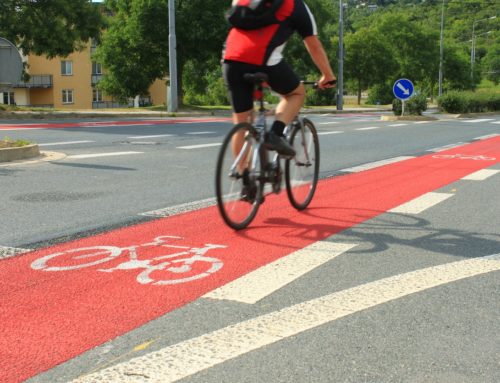Cyclists have to remain hyper-aware of their surroundings, especially when riding on busy city streets in the United States. Staying safe on the road as a bicyclist is no easy task, as almost every other vehicle else on the road is significantly larger and more powerful in comparison.
Hand signals are intended to help make roadways safer both for cyclists as well as other motorists. But is it actually a legal requirement to use hand signals while riding a bicycle? The short answer is that yes, it is, at least in most jurisdictions across the country.
This blog post will cover the common types of hand signals that are usually required as well as what a few specific states have to say about the practice in particular.
What Types of Bicycle Hand Signals Are There?
There are three primary types of hand signals that bicyclists should utilize, depending on the riding behavior that the rider is about to engage in. Most every type of hand signal entails (or at least is the customary practice) that the rider uses their left hand when making the signal if they are able.
Cyclists should signal with their left arm off straight out to the side when they intend to make a left turn.
When making a right turn, the cyclist should bend their left arm out to a right angle, with the hand pointing upward. Some cyclists also extend their right arm off to the side as they would with their left arm when making a left turn, but this is not as common.
The third situation when a cyclist should hand signal is when slowing down or stopping. The appropriate hand signal to use in this situation is the left arm bent out to a right angle as it would when making a right turn. However, the hand should be pointed downward instead of upward in this situation.
United States Law Regarding Bicyclist Hand Signals
Many states have laws on the books that require bicyclists to use hand signals in one form or another.
For example, the State of Florida has law in place that pertains to cyclist hand signaling, making it a legal requirement. The statute does not describe the type of signals that must be used, but it does indicate that they must be used within the last 100 feet of turning.
California’s law on bicycle hand signals is especially brief, merely stating that they must be used within the last 100 feet of turning.
New York State’s law is also short, but it does spell out the type of hand signals that must be used. New York describes hand signals similar to the way they were described above in this article, except that for stopping, the state only requires the left arm or hand to be extended downward instead of at a right angle.
It’s one thing to have these laws in place, but it’s another to enforce them. These hand signal laws are difficult to enforce, and there are many situations where it might actually be unsafe to use one – such as in poor weather conditions. Florida’s law mentions this possibility and gives riders some discretion on when not to use hand signals.
Staying Safe on Your Bicycle
It is usually required to use hand signals when riding your bicycle in the United States. Even though these laws are rarely enforced, that doesn’t mean that they aren’t a good idea to utilize.
Bicycles are not equipped with flashing turn signals as cars are. Even if they were, they likely wouldn’t be sufficient in many situations to inform other motorists of your intended activity. A relevant comparison here is motorcycles. Though almost every motorcycle does have a lighted turn signal, motorcyclists are still taught to use the same hand signals that bicycles use.
The reason for this practice is that motorcycles and bicycles are significantly smaller than other types of vehicles, like cars and trucks. Drivers of those larger vehicles often do not look out for cyclists, so it can help get their attention before turning or stopping. Most motorists are familiar with these hand signals and can respond appropriately.
Ultimately, hand signals exist to protect the safety of you and everyone else on the road. While you might not be cited for failing to use one, as these laws can be tough to enforce, most states reserve the ability to do so if necessary. Even if it wasn’t legally required to use hand signals, doing so is likely in your best interest nonetheless.
For more information, see our benchmarking report or contact us.






Leave A Comment